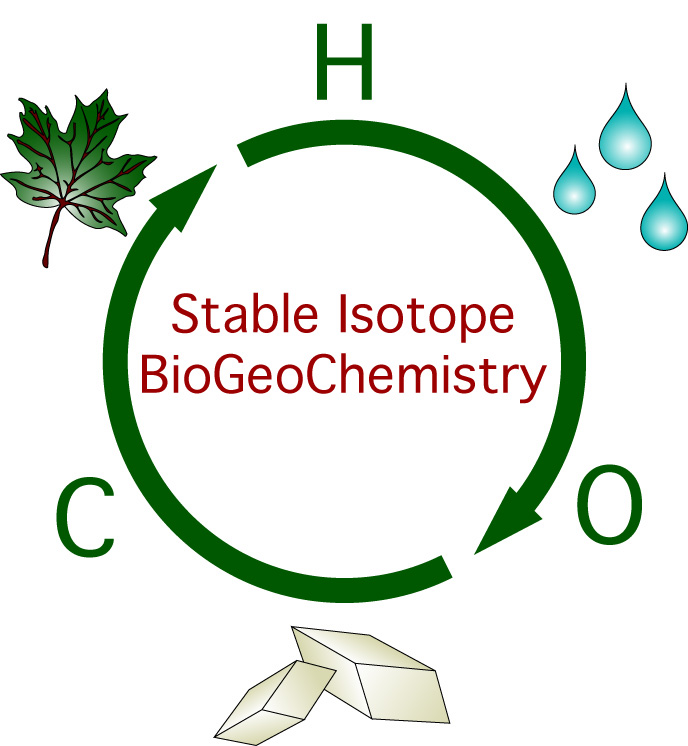
 Stable Isotopes in Carbonates and Other Minerals
Stable Isotopes in Carbonates and Other Minerals
Calcite, the most common carbonate mineral, has the chemical formula CaCO3. The isotopic composition of both the carbon and the oxygen in carbonate minerals provides useful information in determining the origin and genesis of the mineral (or rock) and/or its subsequent history of interaction with geological fluids. Graphite is a mineral form of elemental carbon, and knowledge of it's isotopic composition is likewise useful. For example, isotopic fractionations between two minerals, such as with carbon isotopes in calcite and graphite from a marble, can serve as a "geothermometer" which tells geologists about the temperature at which rock metamorphism took place.
Carbonate minerals are reacted with phosphoric acid in a sealed, evacuated vessel held at a constant temperature to liberate CO2 gas from the CaCO3 structure. Graphites are combusted at high temperature with copper oxide in a sealed, evacuted tube, to produce CO2 gas.
Althouth the KSC Center for Environmental BioGeoChemistry is not yet equipped to measure these values, the oxygen isotope composition of silicate minerals (e.g. quartz, feldspar, mica, etc...), and the hydrogen isotope composition of hydrous minerals (such as micas), are also useful tracers of geochemical processes.

Website by ThorpeAllen.net
Last modified 2008-12-31